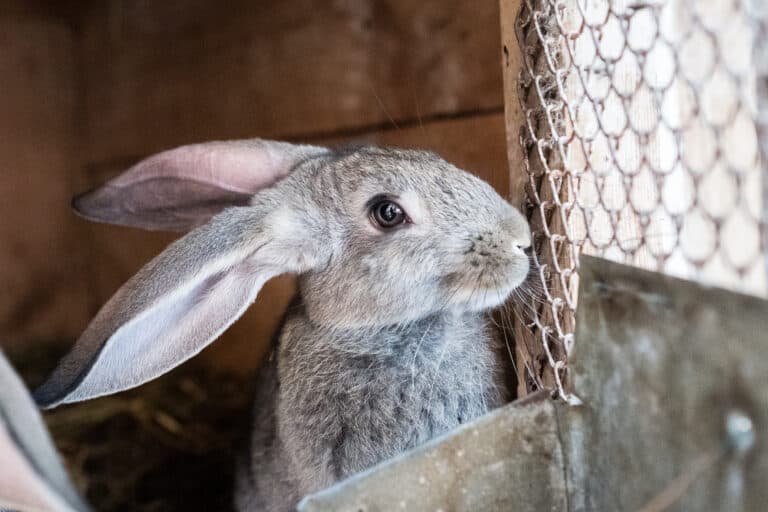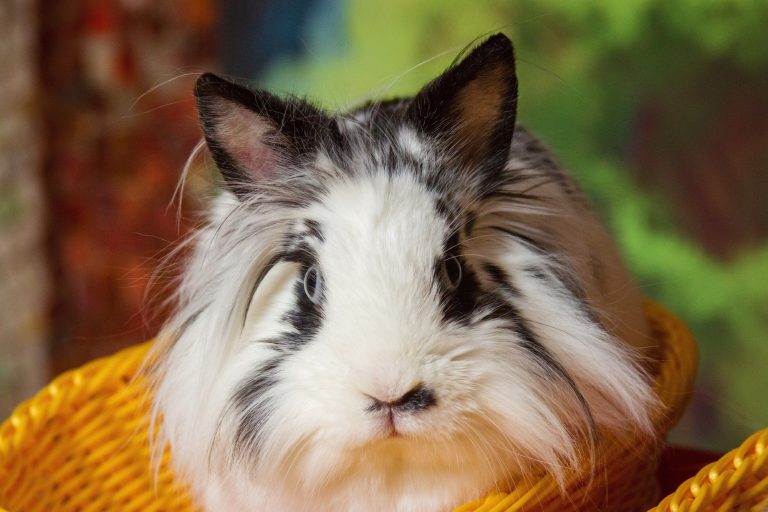6 Signs Your Rabbit Has an Ear Infection

One of the distinguishing physical traits of a rabbit is their ears. Long and floppy, those appendages make a bun simply look too adorable for words. It’s also easy for mites and bacteria to get into those ears because of their size. The many folds inside, along with the moist environment, can make your bun’s ears prone to infection. Ear mite infestations can also lead to the said health issue if left untreated.
That’s why it’s important to know the signs of a rabbit ear infection.
This post contains affiliate links. Affiliate links support Every Bunny Welcome at no additional cost to you. I receive a commission if you choose to make a purchase through these links.
Spotting the Symptoms of a Rabbit Ear Infection
1. Head tilt
This condition is also called a wry neck, where your bun’s head tilts to the side. A bun with an ear infection can exhibit this symptom because the head’s position is controlled by the balance center, which sits near the inner ear. Anything that interferes with the balance center (such as an infection) can cause a wry neck. Loss of balance and abnormal eye movements usually accompany the head tilt.
2. Discharge or odor coming from the ear
A foul odor coming from your bunny’s ear may indicate an infection. More so if you see a thick or soupy discharge, blood, black debris, or whitish or yellowish dried material in your pet’s ear.
3. Changes in behavior
Pain can make your bun irritable. He may also grind his teeth. Although teeth grinding can indicate contentment, it can also signify discomfort. Teeth grinding because of pain is usually louder than when it’s due to contentment. A bun with an ear infection may also shy away from your touch.
4. Droopy ear
If your bunny is not the type that has naturally floppy ears, then a drooping ear can be a sign that infection is blossoming inside his ear.
5. Cold-like symptoms
It may sound strange that your rabbit will exhibit cold-like symptoms because of an ear infection. But the explanation is quite simple. The condition may have spread from the ear to the nose and throat, leading to a respiratory infection.
6. Loss of appetite
An ear infection tends to cause nausea and dizziness as it affects the balance center of your bun. As a result, your pet may not feel like eating. Pain when chewing may also cause a rabbit to turn away even from the tastiest treats.

What Causes Ear Infections in Rabbits?
All rabbits, no matter what breed, experience ear infections from time to time. However, lop-eared ones are more prone to developing this condition because of their ear structure. So be more vigilant if you have a lop-eared bun.
The top causes of ear infections in rabbits are:
- Bacteria: Sometimes, the infection starts in the respiratory tract, then travels to the middle or inner ear via the tube that connects the two sections. The common bacteria associated with this condition are Pseudomonas aeruginosa, Staphylococcus sp, Streptococcus epidermidis, Pasteurella multocida, Bordetella bronchiseptica, Escherichia coli (E. Coli), and Bacteroides spp.
- Ear mites: A substance in the feces and saliva of these parasites can irritate the ear canal and ear flap, leading to pruritus, or an extremely itchy sensation, causing your bun to scratch. The frequent scratching can inflame the skin and create a perfect breeding ground for bacteria.
- Ear wax build-up: Your bun’s ears produce ear wax naturally. The wax is removed either through grooming or normal ear drainage. But sometimes, the ear wax builds up and irritates your bunny’s ears. Like in the case of ear mites, frequent scratching can inflame the skin and lead to an ear infection.
How to Treat a Rabbit Ear Infection
The treatment for your bunny’s ear problem depends on the cause. If bacteria are behind the condition, your bun may need antibiotics. Anti-parasitic agents in the form of injections or spot-on treatments can eliminate ear mites and other parasites that live in your pet’s ear flaps and canals.
If your bunny seems to be in pain, the vet may prescribe anti-inflammatories to provide relief.
Meanwhile, regular grooming will help prevent wax build-up in your rabbit’s ears.

Check Your Rabbit’s Ears
Regularly checking your bun’s ears will help alert you to a developing infection as you’ll be thoroughly familiar with how healthy ears look.
Here are some tips on what to do when you check out your pet’s ears:
1. Prepare your bunny
Ideally, you should get your rabbit accustomed to being touched and having his body examined from when he was a baby. In any case, you need to pick a spot where your bun is comfortable. We recommend sitting on the floor as rabbits hate being held high off the ground. You can play with your bun a bit or give him some treats.
2. Keep your rabbit calm
An anxious rabbit might struggle to get away and hurt himself in the process, so make sure that your bun is relaxed before you start looking into his ears. If he enjoys sleeping on your lap, you can pet him until he feels all comfy and drowsy, so he’s likely to put up a fight when you peer into his ears.
3. Examine the outer ear and the ear canal
The outer part of the ear, also called the pinnae, should be free of scabs, flakes, wounds, or scales. It’s normal for the ear canals to have some wax, but it should have a pale, creamy color. Discolored wax may indicate the presence of ear mites or the beginnings of an infection.
Look for redness and swelling. Check, too, that no foul odor comes out of your pet’s ears.
4. Check for lumps and other unusual swellings
If you’ve been examining your bun’s ears from the time he was small, you likely have a pretty good idea of how his ears usually look. This makes it easier for you to spot any abnormalities in those floppy appendages.
Feel around the base of his ears for any swelling or inflammation. Do the same thing with the flaps.
5. When in doubt, consult your vet
If you spot anything that seems out of the ordinary, don’t hesitate to talk to your rabbit-savvy vet to ask for guidance.
Ear infections can be common in rabbits. But that doesn’t mean you shouldn’t take them seriously as they can lead to more severe health issues. Prompt action and intervention can help bring your bun back into tiptop shape.
More on Rabbit Care
- How Long Do Flemish Rabbits Live: Giant Breed Facts
- Complete Guide to the Best Hay For Rabbits: Reviews & More
- Are Rabbits Rodents? Find Out More About These Small Mammals
- Is Oat Hay Good for Rabbits? Complete Guide to the Best Hay
- Why Do Rabbits Lick You? 11 Reasons for This Common Behavior
We hope you enjoyed this post! If you did, will you give it a share or two 🙂 Thank you! ~from Every Bunny Welcome






